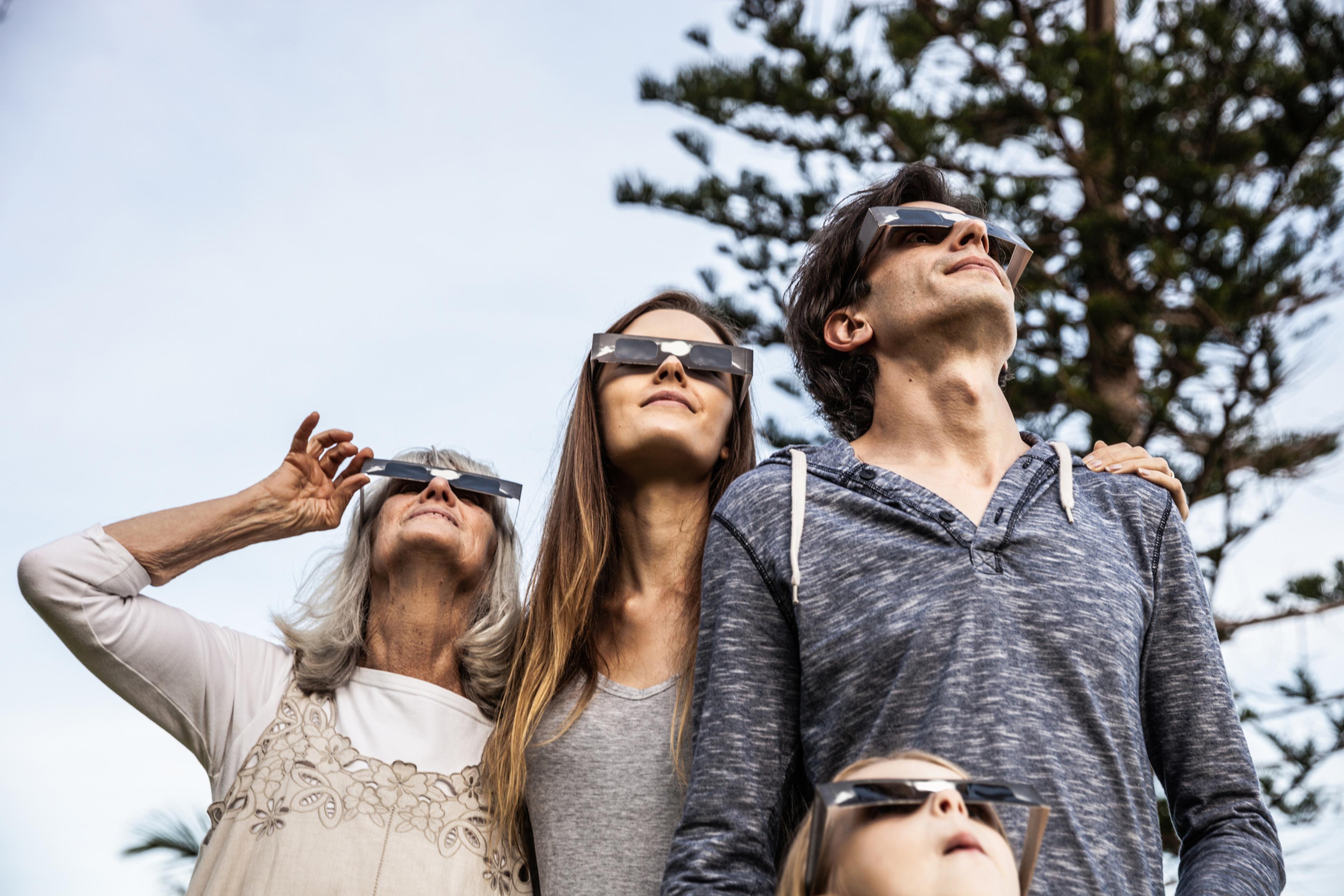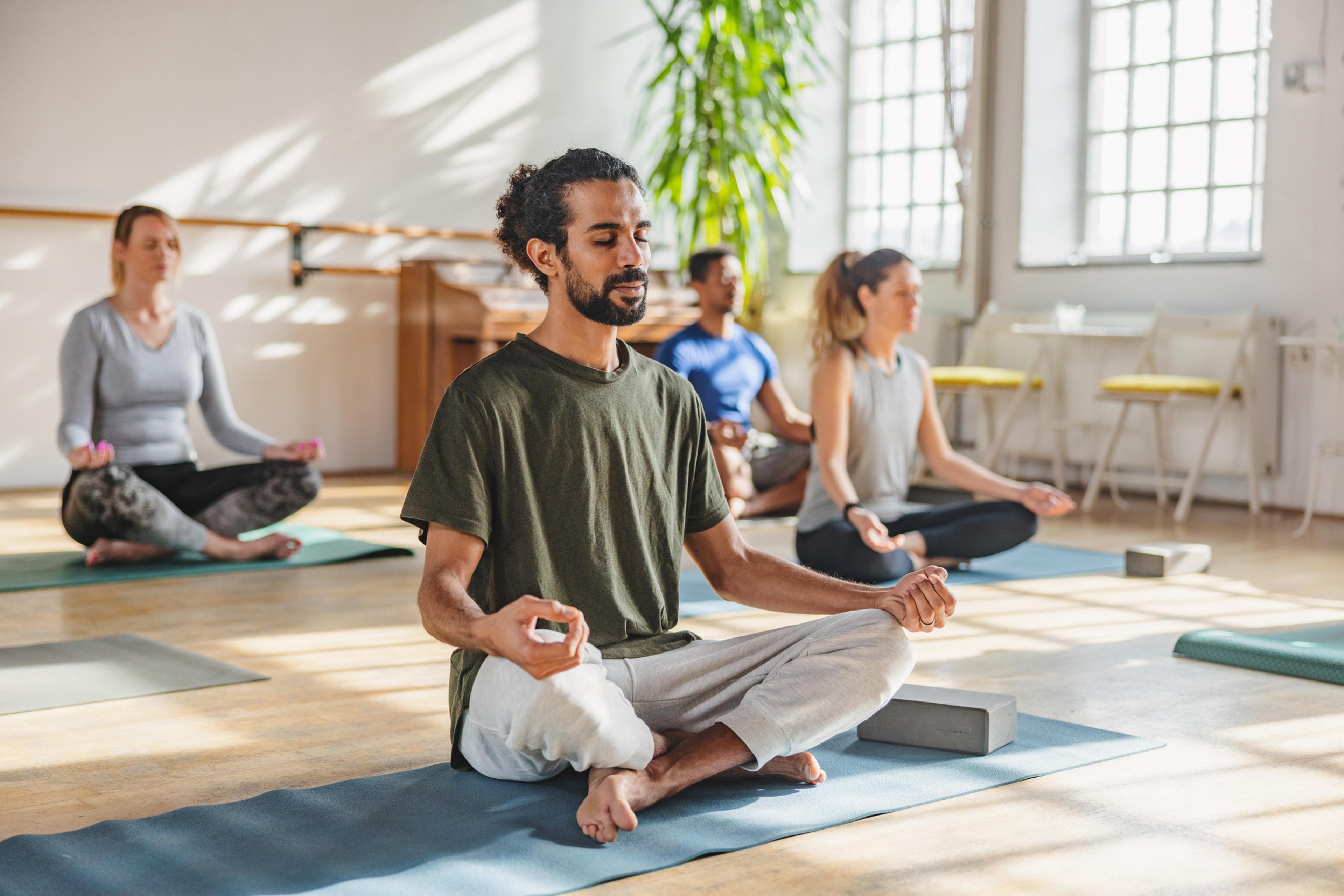How to Safely Watch the 2024 Total Solar Eclipse
Jake Newby
| 4 min read

A total solar eclipse will cross the United States on Monday, April 8. The last time the U.S. experienced a total solar eclipse from coast to coast was Aug. 21, 2017, so this next one marks a can’t-miss moment. But watching an eclipse without proper eyewear is not a bright idea.
A total solar eclipse happens when the moon passes between the sun and the Earth and completely blocks the face of the sun for a moment. The sky darkens in the middle of the day as if it were dawn or dusk.
Safety should be your number one priority when gearing up to watch a solar eclipse. Here’s how to protect your eyes, as well as additional information to prepare you for the big event.
What to know about the next solar eclipse
The track of the moon's shadow across Earth's surface is known as the path of totality. To witness the April 8 total solar eclipse, viewers must be within the 115-mile-wide path. The upcoming eclipse will enter the country through Texas and exit through Maine.
Texas, Oklahoma, Arkansas, Missouri, Illinois, Kentucky, Indiana, Ohio, Pennsylvania, New York, Vermont, New Hampshire and Maine will be in the path of totality, meaning residents of those states should be able to see the eclipse well. Small parts of Tennessee and southwest Michigan will also experience it, according to NASA.
There will be an estimated 99.4% coverage of the sun in Detroit beginning just before 2:00 p.m., reaching maximum totality around 3:15 p.m.
Specifically, Luna Pier in Monroe County will be under the path of totality around 3:14 p.m. This eclipse is projected to last for about 26 seconds. Luna Pier should expect an influx of tourists eager to witness the rare event.
What happens when you watch a solar eclipse without protection?
The high levels of ultraviolet (UV) radiation emitting from the sun’s rays can be destructive to your vision. If you view the total solar eclipse without protection, you risk retina damage and even permanent blindness.
In addition to UV radiation, the sun also emits infrared radiation, which can generate heat. According to the National Eye Institute (NEI), direct exposure to intense sunlight can cause thermal damage to the eyes, which is associated with side effects like inflammation, tissue damage, and discomfort.
Per the NEI, these are the main risks associated with watching a solar eclipse (or looking directly at the sun any time) without protection:
- Solar Retinopathy: Caused by the sun’s intense light, this condition occurs when the light-sensitive cells in the retina are damaged. Symptoms include blurred vision, sensitivity to light, dark spots or “blind spots” in your central vision, changes in color perception or a pressure sensation in the eye.
- Photokeratitis: Also known as "sunburned eyes" or "welder's flash," photokeratitis can occur from exposure to intense UV radiation from the sun. Symptoms may include pain, redness, tearing, and a feeling of sand in the eyes. While this condition is usually temporary, it can cause considerable discomfort.
- Macular Edema: This condition occurs when the central part of the retina swells, leading to distorted vision and the potential for permanent damage. Symptoms may develop gradually over time, and some individuals may not notice symptoms until the condition progresses.
How to protect your eyes and safely watch a solar eclipse
Watching the eclipse through special-purpose solar filters is one of two ways to watch it safely. These filters must meet an international standard, according to the NEI, indicated by ISO 12312-2 certification. These glasses must have the manufacturer’s name and address printed somewhere on the product and be no older than three years.
Do not attempt to peek through your fingers to watch the total solar eclipse. Also, avoid watching it through any of these devices:
- Binoculars
- Photo cameras
- Pinholes without the combination of projectors
- Regular sunglasses
- Special-purpose solar filters with damaged or scratched lenses
- Telescopes
- Any other optical device that uses eclipse glasses or handheld filters
Even dark UV-blocking sunglasses cannot protect the eyes from the damage associated with staring directly at the sun.
The only safe way to watch a solar eclipse without special-purpose solar filters is to turn your back to the sun and watch through a homemade pinhole projector. With the Sun behind you, pass sunlight through a small opening (for example, a hole punched in an index card) and project a solar image onto a nearby surface (another card, a wall, or the ground are examples).
A pasta colander, a straw hat or any other item that is riddled with small holes can make for a good pinhole projector. If you decide to go the pinhole projector route, read more tips and instructions from Solar Eclipse Across America at this link.
If you do experience changes in your vision – especially your central vision – it's essential to see an eye doctor right away to prevent further vision loss.
Read more from MI Blues:
- ‘This is His Favorite Place to Be:” Miracle League Makes Unforgettable Memories for Lake Orion Child with Special Needs and His Family
- How Vision is Tested in Young Children
- CEO: Balduck Park Improvements Key to Detroit Neighborhood Revitalization
Photo credit: Getty Images





